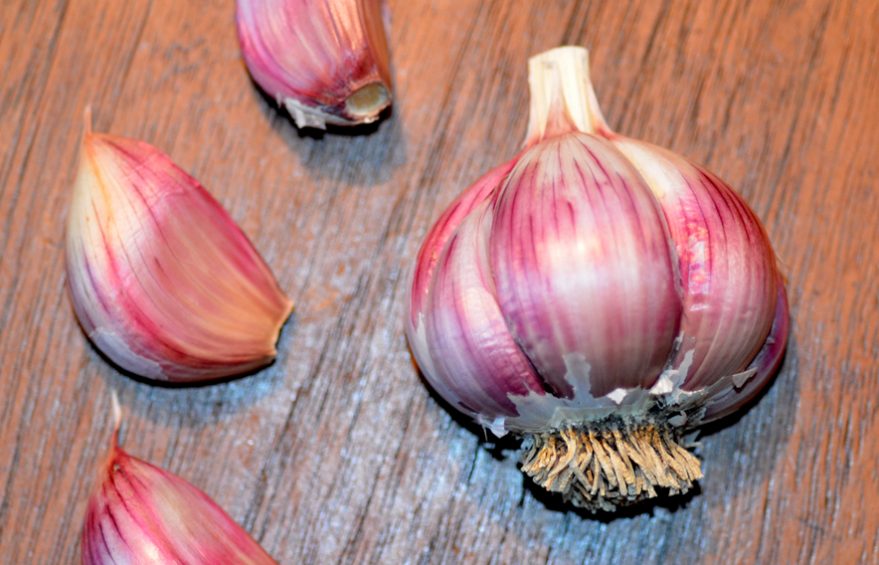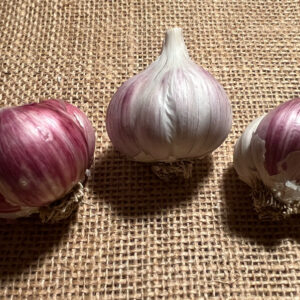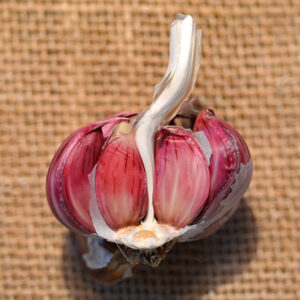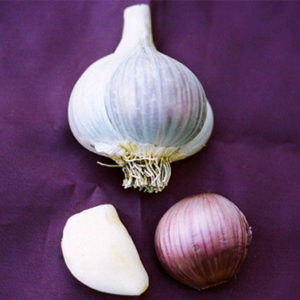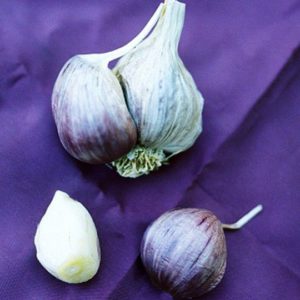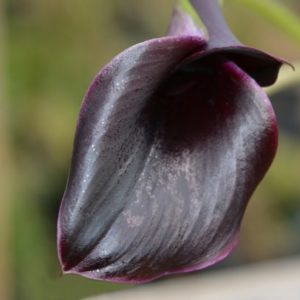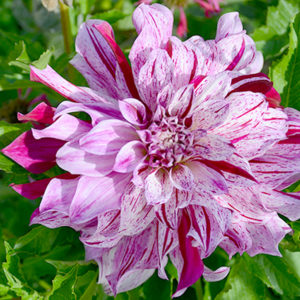Description
 Creole Garlic,
Creole Garlic,
Rose Du Lautrec
GARLIC, which is a member of the same group of plants as the ONION, has been cultivated for millennia. As a cultivated plant, it is so old that it is difficult to credit a country of origin for this vegetable. Some historians believe that onions and garlic was indigenous to the southwest of Siberia and spread to southern Europe where it became naturalized. It is widely grown in all the Mediterranean countries.
All modern garlic belongs to one of two subspecies: hardneck (ophioscorodon) or softneck (sativum). Hardneck subspecies try to produce flower stalks with small aerial cloves called bulbils. Hardnecks will not produce large bulbs underground unless the flower stalks are removed. There are seven varieties of hardneck garlic: Asiatics, Purple Striped, Glazed Purple Stripe, Marbled Purple Stripe, Porcelain, Turban and Rocambole. Softnecks have lost the ability, for the most part, to produce a flower stalk. However, under certain climatic situations, the bulbs may try to produce a flower stalk known as bolting. There are four varieties of softneck garlic: Artichoke, Turban, Silverskin and Creole.
When gardeners discuss garlic, particularly garlic that does well in mild winter climates, the topic always centers around the Creoles. Creoles are softneck garlics, probably a Silverskin subvariety, that behave like hardnecks. They cannot be braided like most softnecks, and they are known for bolting (producing flower stalks known as scapes) albeit weakly. The Creoles primarily were brought to the United States from Spain possibly by the Spanish explorers. Because they do exceptionally well in warm, drought-prone climates like the Southwest, they are often called Mexican Purple.
We know that wild garlic originally grew in some of the coldest, least hospitable climates on earth. We also know that prolonged exposure to cold, known as vernalization, is necessary for garlic to bulb. However, over the eons since garlic began to be cultivated, some strains of garlic have developed that do well in climates with mild winters. These garlics are known as Creole Garlics for the most part, but there are also a few garlic cultivars that flourish in mild climates that are not Creoles.
The Creole Garlic Group, in addition to flourishing in warm climates also tolerates spring heat spells and drought quite well. This Group was originally known as Southern Continental and referred to Southern Europe.
Creoles are not well known in the US and quite difficult to find. The bulbs tend to be small- to medium-sized, but the flavor is usually outstanding and the Creoles are known for their long storage capabilities. We have found that Creoles can survive a Hardiness Zone 4 winter, but the bulbs are often quite small. They do very well in Hardiness Zones 5-9.
Creoles are incredibly beautiful with stunning, usually burgundy to magenta clove wrappers. They are known for their sweet flavor and excellent storing capacity. Though they never have been able to build national market interest, their unique qualities have made them the darling of home garlic gardeners.

